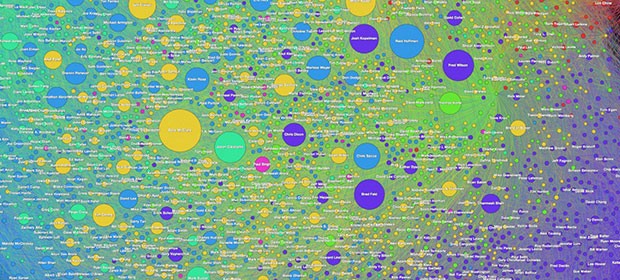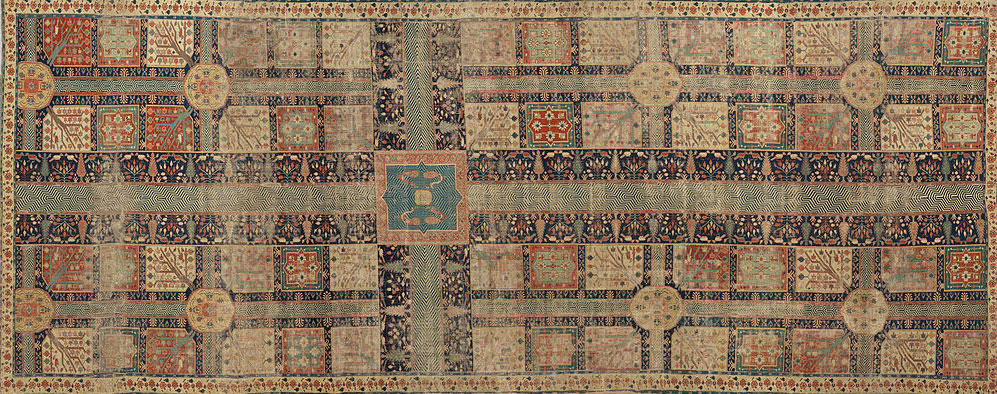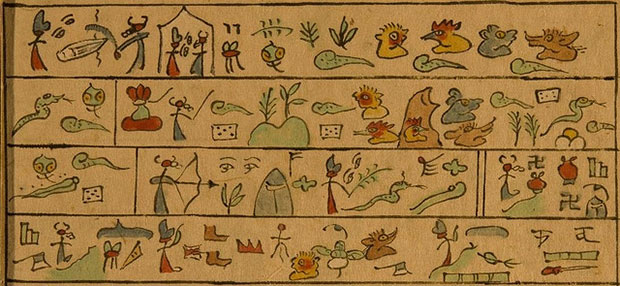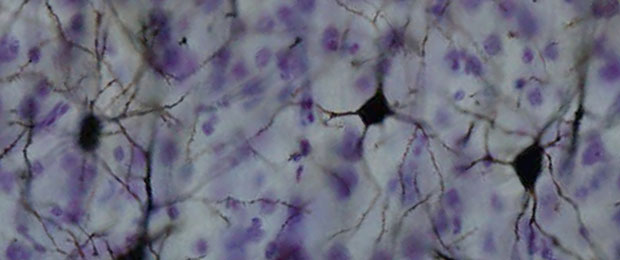
4 trends in fintech startups
An analysis of fintech competitions shows a focus on data, payments, lending, and small business.

Request an invitation to Next:Money, O’Reilly’s conference focused on the fundamental transformation taking place in the finance industry.
Fintech hackathons and competitions occur globally. In January 2012, Swift launched the Innotribe Startup Competition as an initiative to bring together disruptive startups and incumbents in financial services. It was one of the first of its kind and has been joined by similar events in subsequent years. Just this year, I counted 18 fintech hackathons and startup competitions — eight of which are happening later this year.
Fintech startups are aiming to disrupt financial institutions with their technology, products, and design. Meanwhile financial institutions focus on secure systems for money transfer, payments, and lending at a global scale. But the two are not necessarily at odds. It’s hard for incumbents to innovate existing businesses in house, and this is where startups thrive: testing new business models and pushing the limits of technology unencumbered by regulations or corporate baggage. Hackathons and startup competitions are where innovative ideas are tested. Read more…

Lead with merit and be rewarded with success
Michael Lopp on the concept of merit badges for leaders.

Attend Cultivate, September 28 to 29 in New York, NY. Cultivate is our conference looking at the challenges facing modern management and aiming to train a new generation of business leaders who understand the relationship between corporate culture and corporate prosperity.
At our Cultivate conference in July, Michael Lopp had a fantastic session on “Leadership: By the Numbers,” which was a bit like leadership fundamentals that you may have forgotten or never knew. However, he also had a few slides in his presentation that were meant to be a brief tangent from his primary talk, but they grabbed my attention immediately. Lopp always has fantastic stories and pearls of wisdom from the hard-won experiences in his career like “Busy is a bug, not a feature.” But before he launched into his “Vegetable Talk” on how being a good manager is really basic—like vegetables—he explored the idea of having merit badges for leaders. Read more…

Designing at the intersection of disciplines
The O'Reilly Radar Podcast: Simon King on creating holistic, integrated experiences and the importance of discipline overlap.
Subscribe to the O’Reilly Radar Podcast to track the technologies and people that will shape our world in the years to come.
In this week’s Radar Podcast, I chat with Simon King, director of the Carnegie Mellon University Design Center. Harkening back to growing up on a family farm in Michigan, King talks about technology’s growing role in agriculture and the role design is playing in agriculture innovation. He also talks about his new book Understanding Industrial Design and the synergies between industrial design and interaction design. King will be speaking about industrial design at our newly launched O’Reilly Design Conference: Design the Future on January 19 to 22, 2016, in San Francisco.
Here are a few highlights from our conversation:
There’s been different eras of agriculture, and this latest one of precision agriculture or data-driven agriculture has the possibility of really changing the way people farm. I see that to some degree with people like my father and the new tools that he’s embracing slowly — things like autonomous driving tractors and some of the different data services. It’s an opportunity, I think, for new people to come into the field, and it’s going to be important.
Like most industries that are leading with technology, design trails. People are embracing the technology because it’s whole new capabilities that they never had before. Being able to do soil samples and analysis and then create nitrogen prescription maps so that you are not like wasting any chemicals — it’s such a great advancement that people are willing to fight through the fact that it’s poorly designed. We see that in medical; we see that in automotive. Any industry that reaches a certain curve where the technology has become mature, then all of a sudden the experience of using it begins to matter a lot more. I think that’s where design is going to start intersecting with agriculture really strongly and actually make it more accessible to farmers who are generally not that technically savvy.
Industrial design is such an older design discipline. Just purely from the design history standpoint, it’s something that everybody should be studying and be aware of how that discipline has evolved. It’s the underpinning of a lot of the different disciplines that design has kind of fragmented into.

ResourceMiner: Toppling the Tower of Babel in the lab
An open source project aims to crowdsource a common language for experimental design.
Contributing author: Tim Gardner
Editor’s note: This post originally appeared on PLOS Tech; it is republished here with permission.
From Gutenberg’s invention of the printing press to the Internet of today, technology has enabled faster communication, and faster communication has accelerated technology development. Today, we can zip photos from a mountaintop in Switzerland back home to San Francisco with hardly a thought, but that wasn’t so trivial just a decade ago. It’s not just selfies that are being sent; it’s also product designs, manufacturing instructions, and research plans — all of it enabled by invisible technical standards (e.g., TCP/IP) and language standards (e.g., English) that allow machines and people to communicate.
But in the laboratory sciences (life, chemical, material, and other disciplines), communication remains inhibited by practices more akin to the oral traditions of a blacksmith shop than the modern Internet. In a typical academic lab, the reference description of an experiment is the long-form narrative in the “Materials and Methods” section of a paper or a book. Similarly, industry researchers depend on basic text documents in the form of Standard Operating Procedures. In both cases, essential details of the materials and protocol for an experiment are typically written somewhere in a long-forgotten, hard-to-interpret lab notebook (paper or electronic). More typically, details are simply left to the experimenter to remember and to the “lab culture” to retain.
At the dawn of science, when a handful of researchers were working on fundamental questions, this may have been good enough. But nowadays this archaic method of protocol record keeping and sharing is so lacking that half of all biomedical studies are estimated to be irreproducible, wasting $28 billion each year of U.S. government funding. With more than $400 billion invested each year in biological and chemical research globally, the full cost of irreproducible research to the public and private sector worldwide could be staggeringly large. Read more…

Data-driven neuroscience
The O'Reilly Radar Podcast: Bradley Voytek on data's role in neuroscience, the brain scanner, and zombie brains in STEM.
Subscribe to the O’Reilly Radar Podcast to track the technologies and people that will shape our world in the years to come.
In this week’s Radar Podcast, O’Reilly’s Mac Slocum chats with Bradley Voytek, an assistant professor of cognitive science and neuroscience at UC San Diego. Voytek talks about using data-driven approaches in his neuroscience work, the brain scanner project, and applying cognitive neuroscience to the zombie brain.
Here are a few snippets from their chat:
In the neurosciences, we’ve got something like three million peer reviewed publications to go through. When I was working on my Ph.D., I was very interested, in particular, in two brain regions. I wanted to know how these two brain regions connect, what are the inputs to them and where do they output to. In my naivety as a Ph.D. student, I had assumed there would be some sort of nice 3D visualization, where I could click on a brain region and see all of its inputs and outputs. Such a thing did not exist — still doesn’t, really. So instead, I ended up spending three or four months of my Ph.D. combing through papers written in the 1970s … and I kept thinking to myself, this is ridiculous, and this just stewed in the back of my mind for a really long time.
Sitting at home [with my wife], I said, I think I’ve figured out how to address this problem I’m working on, which is basically very simple text mining. Lets just scrape the text of these three million papers, or at least the titles and abstracts, and see what words co-occur frequently together. It was very rudimentary text mining, with the idea that if words co-occur frequently … this might give us an index of how related things are, and she challenged me to a code-off.

The rise of networked platforms for physical world services
A look at the huge economic shift led by software and connectedness.

Request an invitation to Next:Economy, our event aiming to shed light on the transformation in the nature of work now being driven by algorithms, big data, robotics, and the on-demand economy.
One of the themes we’re exploring at the Next:Economy summit is the way that networks trump traditional forms of corporate organization, and how they are changing traditional ways of managing that organization. Uber and Airbnb are textbook examples of this trend. Uber has ambitious plans to manage hundreds of thousands — eventually even millions — of independent drivers with a small core of employees building a technology platform that manages those workers. Airbnb is on track to have more rooms on offer than large hotel chains, with under a thousand employees.
Esko Kilpi beautifully described the power of networks in an essay on Medium, The Future of Firms, reflecting on economist Ronald Coase’s theory of 20th century business organization. He wrote:
The existence of high transaction costs outside firms led to the emergence of the firm as we know it, and management as we know it. … The reverse side of Coase’s argument is as important: if the (transaction) costs of exchanging value in the society at large go down drastically, as is happening today, the form and logic of economic and organizational entities necessarily need to change! The core firm should now be small and agile, with a large network.
The mainstream firm, as we have known it, becomes the more expensive alternative. This is something that Ronald Coase did not see coming. Accordingly, a very different kind of management is needed when coordination can be performed without intermediaries with the help of new technologies. Apps can do now what managers used to do.[Bolding mine.]
Today, we stand on the threshold of an economy where the familiar economic entities are becoming increasingly irrelevant. The Internet and new Internet-based firms, rather than the traditional organizations, are becoming the most efficient means to create and exchange value.


